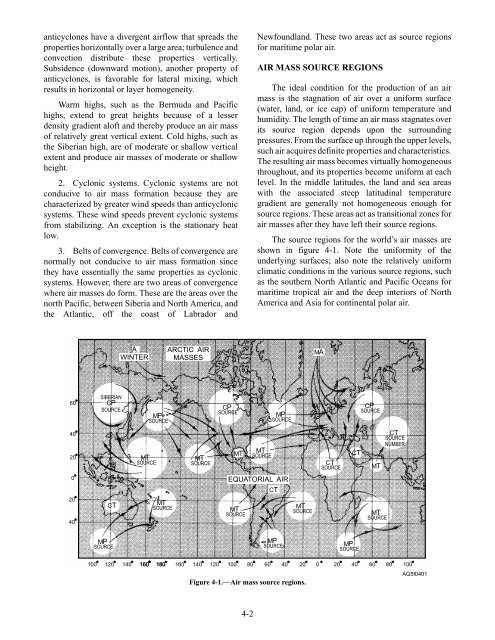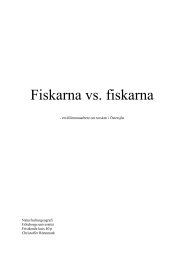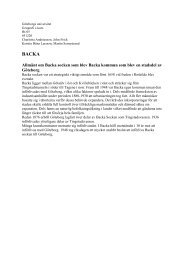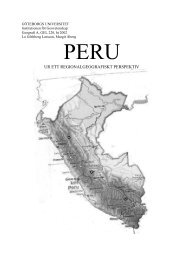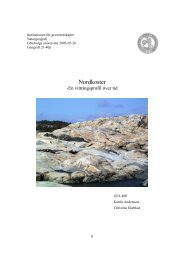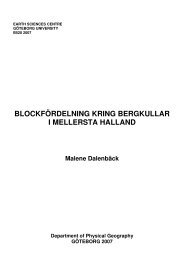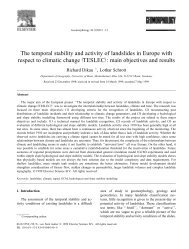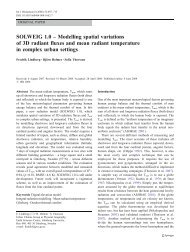AIR MASSES AND FRONTS
AIR MASSES AND FRONTS
AIR MASSES AND FRONTS
You also want an ePaper? Increase the reach of your titles
YUMPU automatically turns print PDFs into web optimized ePapers that Google loves.
anticyclones have a divergent airflow that spreads the<br />
properties horizontally over a large area; turbulence and<br />
convection distribute these properties vertically.<br />
Subsidence (downward motion), another property of<br />
anticyclones, is favorable for lateral mixing, which<br />
results in horizontal or layer homogeneity.<br />
Warm highs, such as the Bermuda and Pacific<br />
highs, extend to great heights because of a lesser<br />
density gradient aloft and thereby produce an air mass<br />
of relatively great vertical extent. Cold highs, such as<br />
the Siberian high, are of moderate or shallow vertical<br />
extent and produce air masses of moderate or shallow<br />
height.<br />
2. Cyclonic systems. Cyclonic systems are not<br />
conducive to air mass formation because they are<br />
characterized by greater wind speeds than anticyclonic<br />
systems. These wind speeds prevent cyclonic systems<br />
from stabilizing. An exception is the stationary heat<br />
low.<br />
3. Belts of convergence. Belts of convergence are<br />
normally not conducive to air mass formation since<br />
they have essentially the same properties as cyclonic<br />
systems. However, there are two areas of convergence<br />
where air masses do form. These are the areas over the<br />
north Pacific, between Siberia and North America, and<br />
the Atlantic, off the coast of Labrador and<br />
60<br />
40<br />
20<br />
0<br />
20<br />
40<br />
SIBERIAN<br />
CP<br />
SOURCE<br />
CT<br />
MP<br />
SOURCE<br />
A<br />
WINTER<br />
MT<br />
SOURCE<br />
MP<br />
SOURCE<br />
MT<br />
SOURCE<br />
ARCTIC <strong>AIR</strong><br />
<strong>MASSES</strong><br />
MT<br />
SOURCE<br />
CP<br />
SOURCE<br />
MT<br />
MT<br />
SOURCE<br />
4-2<br />
Newfoundland. These two areas act as source regions<br />
for maritime polar air.<br />
<strong>AIR</strong> MASS SOURCE REGIONS<br />
The ideal condition for the production of an air<br />
mass is the stagnation of air over a uniform surface<br />
(water, land, or ice cap) of uniform temperature and<br />
humidity. The length of time an air mass stagnates over<br />
its source region depends upon the surrounding<br />
pressures. From the surface up through the upper levels,<br />
such air acquires definite properties and characteristics.<br />
The resulting air mass becomes virtually homogeneous<br />
throughout, and its properties become uniform at each<br />
level. In the middle latitudes, the land and sea areas<br />
with the associated steep latitudinal temperature<br />
gradient are generally not homogeneous enough for<br />
source regions. These areas act as transitional zones for<br />
air masses after they have left their source regions.<br />
The source regions for the world’s air masses are<br />
shown in figure 4-1. Note the uniformity of the<br />
underlying surfaces; also note the relatively uniform<br />
climatic conditions in the various source regions, such<br />
as the southern North Atlantic and Pacific Oceans for<br />
maritime tropical air and the deep interiors of North<br />
America and Asia for continental polar air.<br />
MT<br />
SOURCE<br />
MP<br />
SOURCE<br />
EQUATORIAL <strong>AIR</strong><br />
CT<br />
MP<br />
SOURCE<br />
MT<br />
SOURCE<br />
CT<br />
SOURCE<br />
CT<br />
MP<br />
SOURCE<br />
CP<br />
SOURCE<br />
MT<br />
MT<br />
SOURCE<br />
CT<br />
SOURCE<br />
NUMBER<br />
100 120 140 160 180 160 140 120 100 80 60 40 20 0 20 40 60 80 100<br />
AG5f0401<br />
Figure 4-1.—Air mass source regions.<br />
MA


